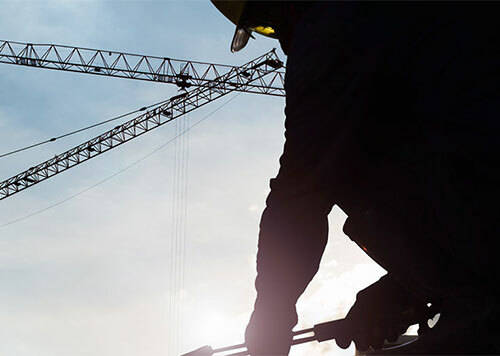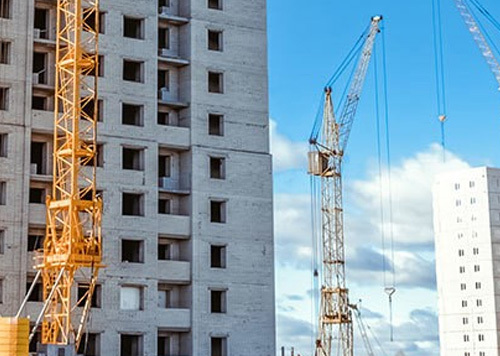Construction Companies Rethinking Safe Work Environments During COVID-19
Over the course of the coronavirus pandemic, the Occupational Safety and Health Administration (OSHA) and the Centers for Disease Control (CDC) have offered broad guidance on coronavirus (COVID-19) and worker safety, as outlined in our previous Alert, “OSHA Points Employers to Interim CDC Guidance on Worker Safety During the COVID-19 Pandemic.” For the most part, industry-specific guidance has been focused on business operations designated as “high risk,” such as the healthcare industry. In the absence of federal guidance, some local governments, particularly COVID-19 “hot spots” such as New York City and Los Angeles, have published guidance on best practices specifically applicable to the construction industry. In fact, Los Angeles has gone so far as to issue mandatory COVID-19 safety rules for construction sites. In addition to local governments, individual industry organizations have also issued suggested safety practices specific to the coronavirus. It is reasonable to expect that some or all of these types of practices may be adopted in other jurisdictions, particularly urban areas, as the virus spreads.
Even outside of pandemics, OSHA expects employers to look beyond specific state or federal laws and take adequate steps to protect its employees. The current COVID-19 pandemic only makes these determinations trickier for employers, and applicable best practices should factor into all such decisions. Therefore, in addition to OSHA’s general “safe workplace” requirements, construction employers would be prudent to consider all such guidance when developing safety protocols specific to COVID-19 risks. Likewise, employers in related industries, such as environmental engineering or civil engineering, should also consider taking heed of these developing best practices.
Many construction employers already utilize safety plans and protocols, which are usually sufficient to afford their employees adequate protection. In light of the COVID-19 pandemic, it would be prudent for employers to monitor and implement current OSHA guidance regarding hazard assessments. Doing so would help ensure that updates on issues such as personal protective equipment are factored into safety protocols. Preparing, documenting, and following a proper hazard assessment analysis will likely go a long way towards warding off a subsequent allegation by OSHA that an employer did not take sufficient steps to protect its employees. Employers should also familiarize themselves with the guidance previously published by OSHA and the CDC regarding worker safety in light of coronavirus.
Construction employers (as well as other employers involved with multiple employees and multiple trades at job sites) should also consider implementing some or all of the developing best practices, including the following:
- Developing an infectious disease preparedness and response plan;
- Training individual workers on basic infection prevention measures to prevent the spread of coronavirus, including good hygiene practices (such as frequency and duration of hand washing and cough/sneeze etiquette) and appropriate social interaction;
- Posting, in areas visible to all workers, required hygienic practices including not touching face with unwashed hands or with gloves; washing hands with soap and water for at least 20 seconds; use of hand sanitizer with at least 60% alcohol; cleaning AND disinfecting frequently touched objects and surfaces such as workstations, keyboards, telephones, handrails, machines, shared tools, elevator control buttons and doorknobs; covering the mouth and nose when coughing or sneezing as well as other hygienic recommendations by the CDC;
- Considering the implementation of daily wellness checks and instructing sick workers to leave the project site and not to return to work until applicable CDC criteria for returning to work are met;
- Providing personal protective equipment such as gloves, goggles, face shields and face masks as appropriate for the activity being performed;
- Installing additional wash stations and hand sanitizer equipment in multiple, clearly identified locations to encourage proper hygiene practices, including near project site entrances, lifts or elevators, and “porta johns”;
- Making sure that all site meetings (including toolbox talks, safety briefings, site planning meetings, pre-shift meetings and new hire orientations) incorporate information about proper hygiene and coronavirus-specific procedures, whether on site, performing project-related activities elsewhere or outside the project fence line;
- Staggering any meetings that must be conducted in person and implement social distancing and other appropriate safety protocols with respect to such meetings;
- Conducting meetings virtually, over the phone or, at a minimum, outdoors whenever possible, and instructing workers to limit close contact whenever possible;
- Ensuring that all tools and equipment are properly wiped down after each use, and to the fullest extent possible replacing face masks after daily use and when sneezed or coughed into;
- Identifying “chokepoints” and other high risk areas where it may be unavoidable for workers to operate in close proximity to others (e.g., hallways, hoists, elevators and trenches) and implementing measures to minimize duration of such activity and numbers of individuals involved and, to the extent feasible, to maintain some level of distancing;
- Staggering working hours and project site activities and resequencing trades wherever possible to reduce on-site density and congestion;
- Discouraging workers from using other workers’ equipment, including laptops, phones or desks;
- Assigning a dedicated safety person to monitor work site activities and adherence to safety and hygiene protocol, intervening when necessary to instruct on better practices; and
- Instructing multiple supervisors on potential coronavirus symptoms, and having those supervisors monitoring employees for any signs of symptoms and intervening where necessary to instruct on better practices (where appropriate or needed).
In addition to the above, construction employers should also be mindful that OSHA has expanded its temporary guidance on respiratory protection methods under the COVID-19 pandemic from just the health care industry to all industries. Essentially, OSHA has modified its typical enforcement guidance on employee respiratory protection to allow for the fact that there is currently a shortage of proper respiratory protective equipment (such as N95 filtering facepiece respirators). The new guidance allows employers to (1) extend the use of or to reuse N95 masks or respirators, provided that the equipment is used by only one worker, is not contaminated or damaged, and maintains structural and functional integrity; (2) use any such equipment that may have exceeded the manufacturer’s recommended shelf life; and (3) consider alternative classes of respiratory equipment so long as they provide equal or greater protection to typical N95 respiratory equipment.
These are challenging times for all employers, particularly those in the construction industry. The current situation has complicated an already demanding work environment. Employers who do not take additional measures to address the situation may find that construction activity is deemed too unsafe and removed from the “essential business” activities permitted to continue (such as several states have done, including New York, New Jersey, Pennsylvania, Washington, Michigan and Vermont) or may be faced with complaints that could lead to liability or OSHA-related action. For example, a recent Freedom of Information Act request filed by The Washington Post revealed that OSHA has received over 3,000 employee complaints due to COVID-19 issues, with many involving the construction industry. This total is likely much higher, as individual state agencies also regularly receive such complaints in addition to federal OSHA. Therefore, employers will be well-served to consider all applicable guidance that will best protect their employees and the project site.
If you have any questions related to this alert, please do not hesitate to contact your regular Smith Anderson lawyer or any other member of our firm. Additionally, please visit and bookmark our firm’s Coronavirus (COVID-19) Business Resource Center which is continuously updated with useful materials and resources related to COVID-19. This tool has been made available to ensure that our clients and the broader business community stay informed on key issues that may impact their operations and to navigate the related business and legal issues during these challenging times.
Professionals
- Attorney
- Attorney





